D
Dave Coster
Guest
BEATING BIRDCAGES
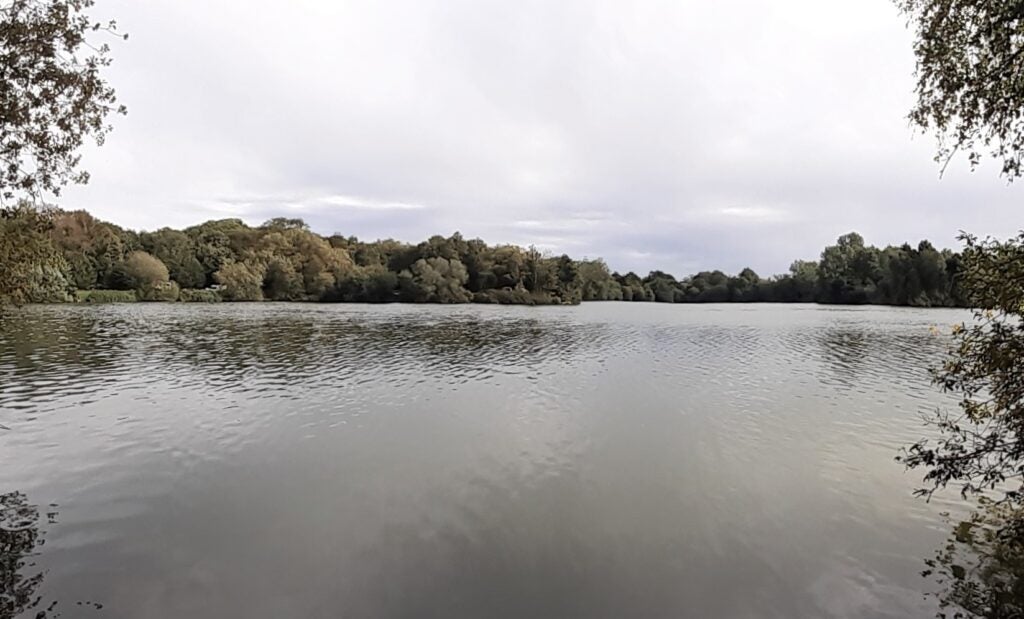
Some of the best swims I’ve fished have been downright awkward casting-wise, often heavily overgrown with foliage on both sides and above. A little bit of pruning can help, but unless you have brought ladders with you, branches overhead have to be put up with. The best way of beating this problem is to use a short bomb or quivertip rod and a scaled-down feeder. Rod-wise, I’m talking about a soft-actioned blank around 10ft in length, with sensitive 3/4oz or 1oz quivertips. You can cast something like this in tight situations, underarm, or even sideways if necessary. It’s easier to be accurate with short rods, even if you have to change your casting style. Another important aspect of fishing feeder tackle at close range in tricky swims, is all the cover attracts plenty of fish. With the modern trend of casting to the horizon, I have a good chuckle when I’m bagging up close, watching numerous feeders crashing out into the beyond.
SCALING DOWN
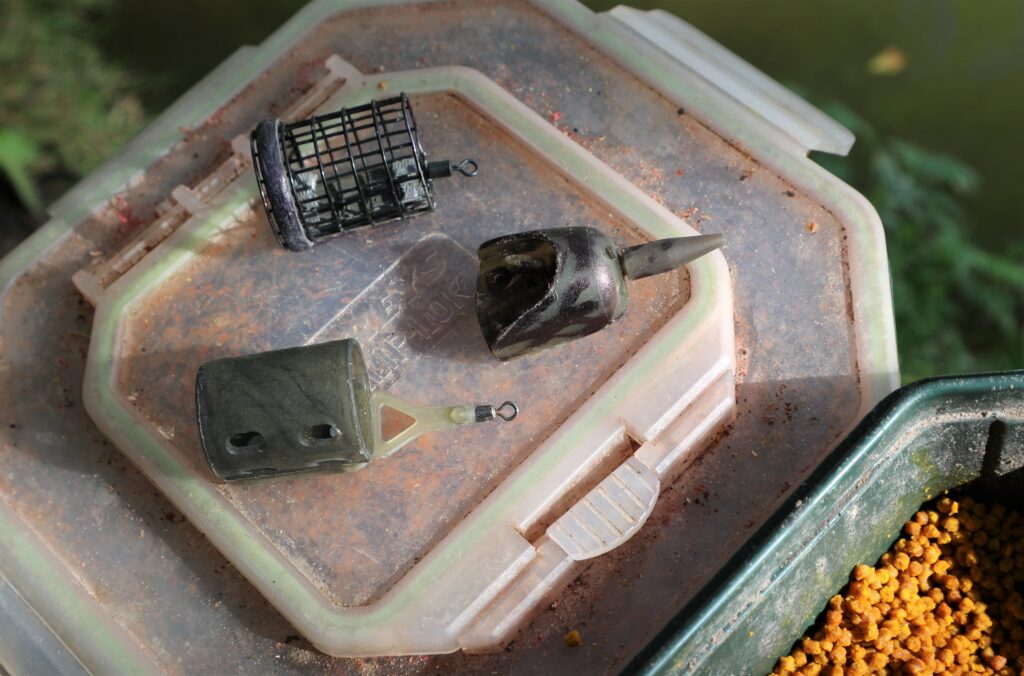
Thanks to the current popularity of launching end tackle into orbit, which is a widespread trend in both specimen and match fishing circles, it’s getting harder to find small, lightweight feeders. I treasure the ones I have in my collection, in many cases purchased many years ago. If I can’t find what I’m looking for, I’m not afraid to rip big weights off any feeder design, to modify it so it suits what I want. Feeders carrying between 10g and 15g are perfect for fishing close range in most depths. I normally kick off with a cage design because it releases its contents quickly, helping to build swims up faster than anything else. Normal practice is to use minimal groundbait to hold in lots of freebies like hemp, casters or pellets. If I want to put in some chopped worm, a plastic-bodied groundbait feeder is better at making sure the load gets down hard on the bottom. A pellet feeder is a good back-up if fish are not responding to groundbait.
SEEING EVERYTHING
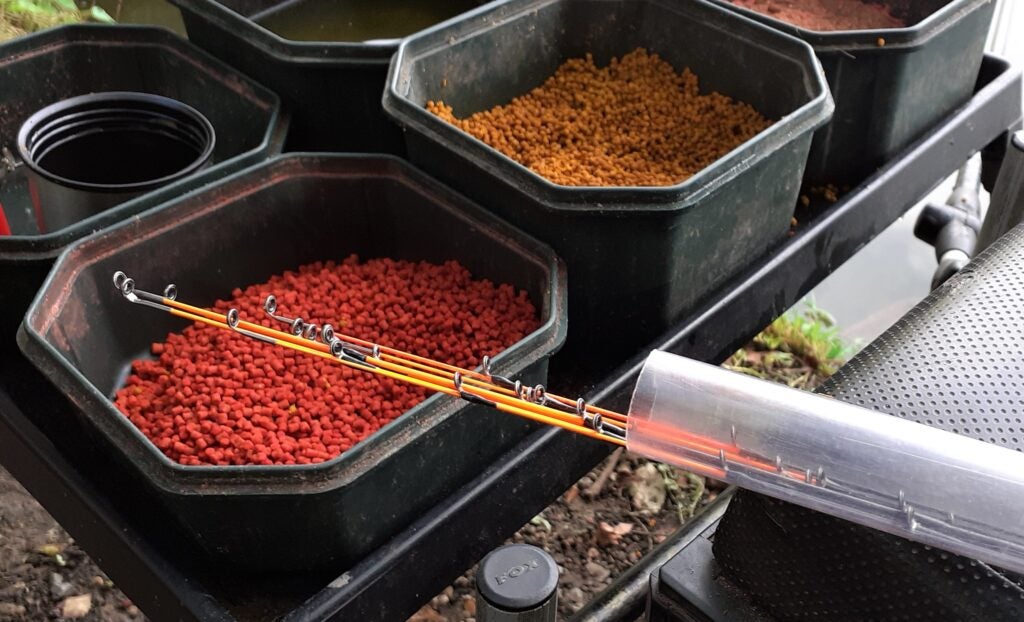
Even if I end up using an in-line feeder and a short hook length, I don’t need a stiff quivertip for anything to hang itself against at close range. A lot of small indications, commonly thought to be caused by fish attacking feeders, are not always that in my opinion. Bream and roach often create tiny movements on light-action quivertips, mouthing baits and letting go if they feel any resistance. A 3/4oz or 1oz super-sensitive carbon quivertip helps to highlight these tiny indications, which often result in good fish if connected with. A lightweight feeder and soft quivertip both help to prevent taking fish feeling resistance and rejecting hook baits. Having rigs free-running has the same effect, although with short hook lengths and in-line feeders fished close in, takes are often savage enough for fish to hook themselves. Carbon quivers are better than fibreglass ones in my opinion, blending in a lot more smoothly with high modulus blanks.
BETTER BALANCED
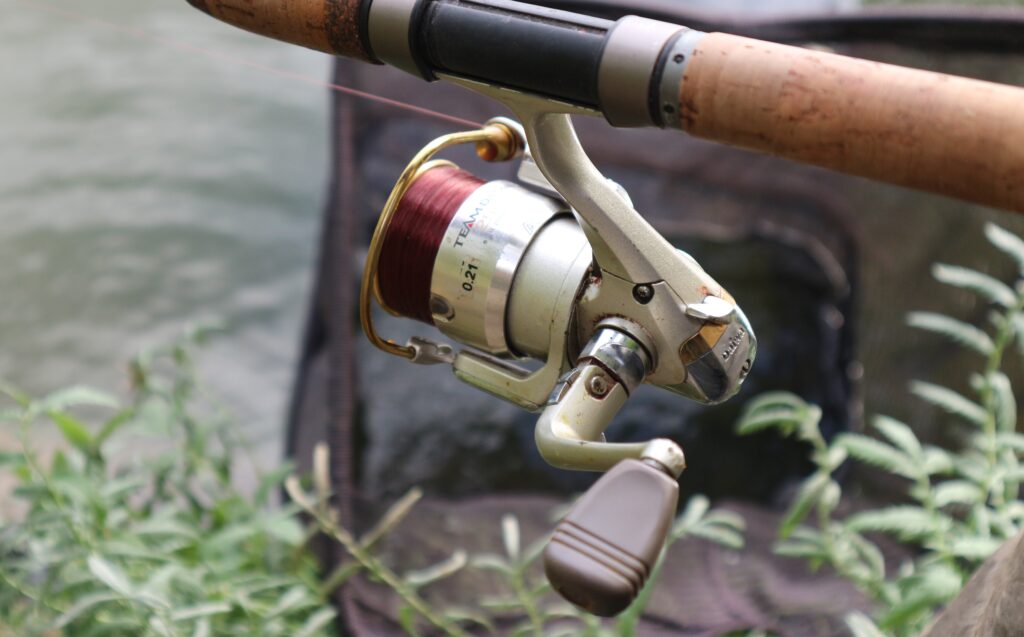
It would be a travesty to spoil the balance of my favourite short quivertip rods, which are pleasantly lightweight and highly responsive. There’s no place or need for big pit reels here! Even some of my standard feeder reels are too big and heavy, so I’ve brought an old Daiwa winding machine out of retirement, which I used many years back for float fishing. It works fine for short chucks, combined with less weighty feeders. Line twist isn’t such a problem with smaller diameter spools at close range either. What I’m looking for is a balanced set-up, combined with a through-action rod and super-smooth reel, which doesn’t struggle when fish need to be cranked in and kept away from nearside snags. In my experience, higher priced reels are far less likely to struggle when put under serious pressure. I don’t use a clutch, finding it loses too much control when playing big fish, plus such devices cause line twist. Backwinding is better.
MINI MARVELS
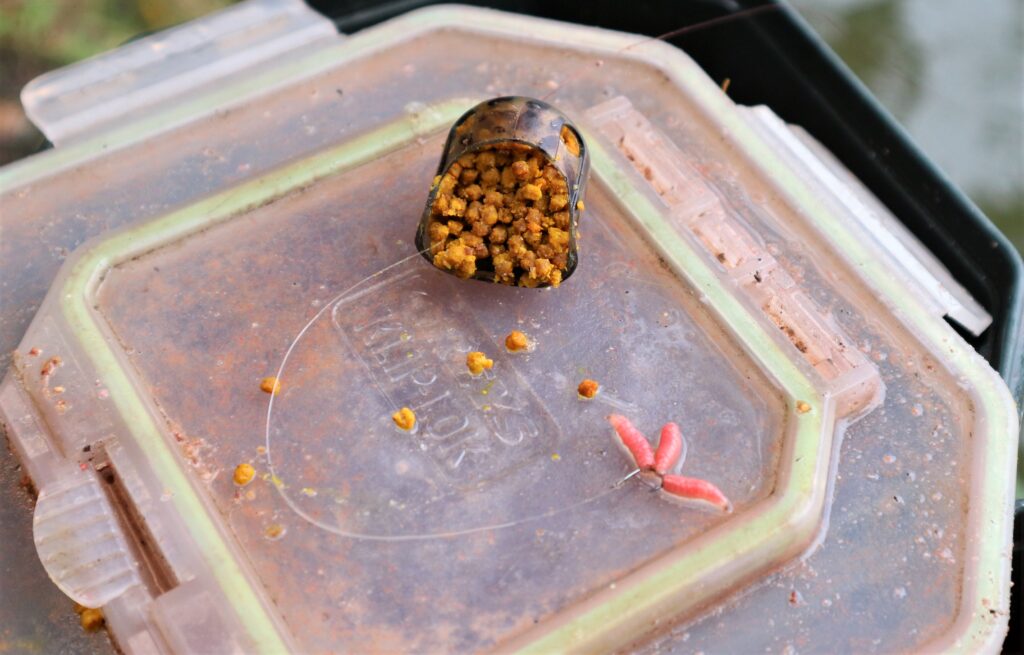
Going back to my Grand Union Canal days, I often used tiny maggot feeders on wider stretches where chub were resident. I made a special short quivertip rod, or winklepicker as we used to call them back then. I remember using it on places like Lady Capels, a top match venue at the time. My custom-built rod acted like an elastic band after hooking anything, bending right the way through. But it worked and allowed me to use fine tackle to conjure bonus bites and fish. These days there are plenty of short, sensitive quivertip rods that will do a similar job, but I now find myself relying more and more on small pellet feeders at the business end of my tackle. I enjoy using cage and small groundbait designs, but pellet models have been more effective on many types of venues. I think this is due to there being so many interesting flavoured pellets to choose from, with wider colour choices and sizes that cover all types of species.
CHANGING THINGS
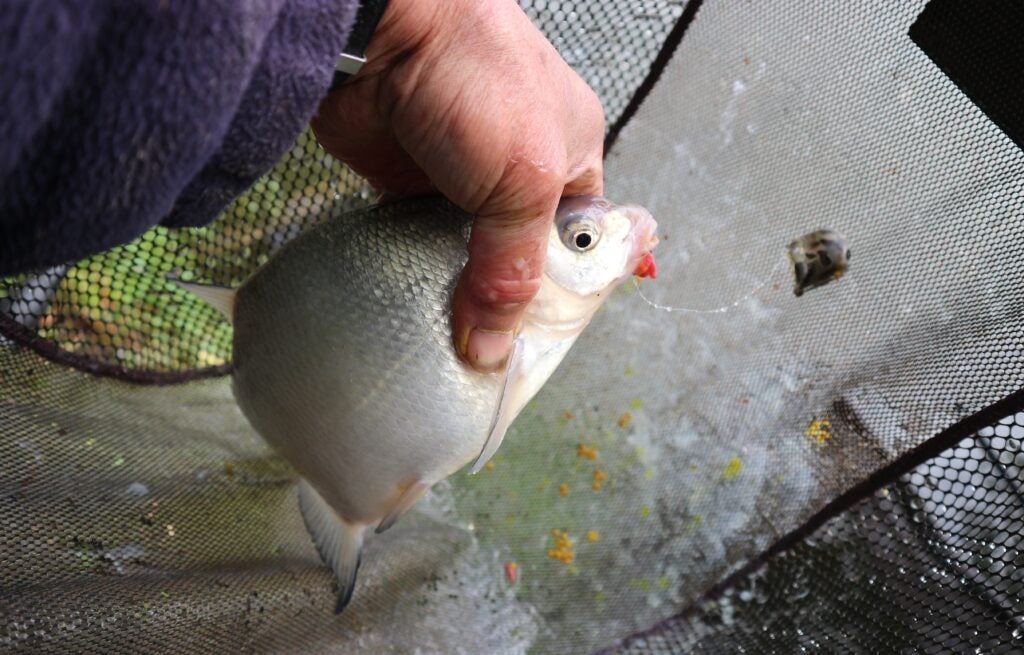
Starting with a cage feeder quickly stirs swims into action, but a major problem can be pulling in never-ending shoals of small perch. After an hour of winding these little blighters in, I often wonder if they are masking the fact that bigger fish have moved in. A good way of finding out is switching to a pellet feeder, which can instantly open up a new world. Simply feeding micro pellets and burying two or three red maggots inside the feeder is a good way of defeating “wasps”, as I call them, allowing good fish like this skimmer time to get in on the action. It attacked the pellet loading as it hit bottom, signalled by a weird trembling on the quivertip, which then bent round and stayed there. Burying baits like maggots often works, but if small perch problems persist, switching to banded pellets can help. Changing hook lengths isn’t a problem either, done quickly with a connector bead, alternatively hooking a band installed on a hard pellet.
BEING ACCURATE

I remember having a conversation with a top feeder angler and was amazed when he told me he preferred an 11ft quivertip rod on his beloved tidal river. “Why so short?” I asked. “Because it’s more accurate”, he said. Everyone else was using 12ft or 13ft blanks on what could be a powerful venue, depending on the tides. The shorter aspect made perfect sense to me when I thought about it, recalling how my 9ft canal winklepicker always put a tiny feeder on the money. I’ve found that’s still the case with my current high modulus carbon bomb-style rods. My favourite is 10ft, which is just long enough to keep bigger fish from running my rigs into nearside snags as they come close to the landing net stage. One thing is for sure, it’s impossible to be super-accurate when launching heavy feeders to the horizon with much longer and beefier rods. The only way it would be possible to hit the mark every time at range would be with a bait boat!
A NEW WAY
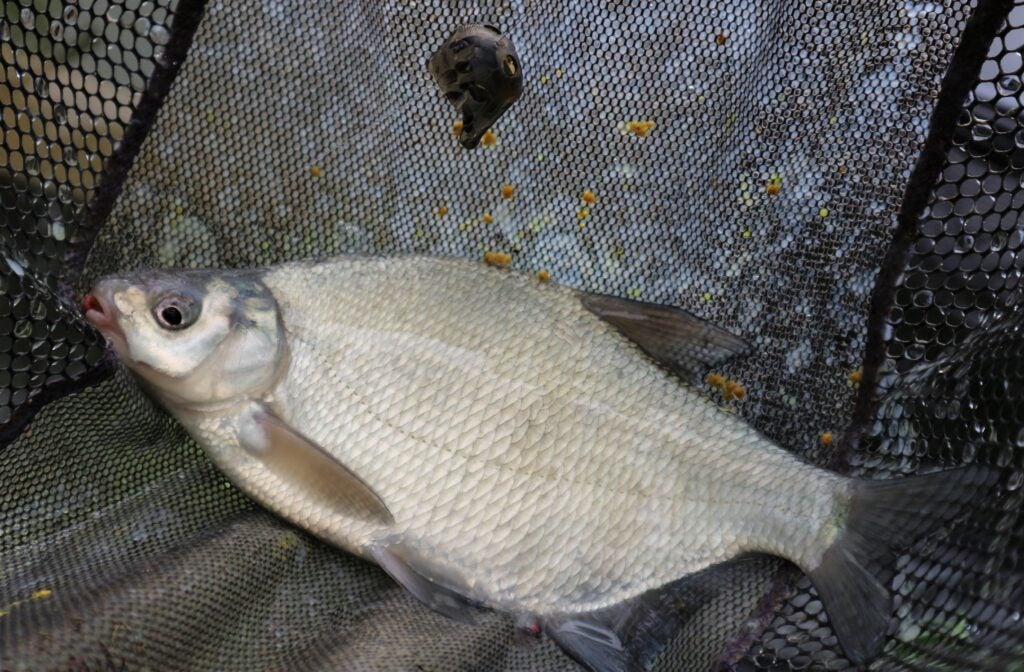
Something that used to annoy me when using short hook lengths, was the way they often wrapped back around feeders, virtually every time if you left the hook bait dangling free. But I don’t always want to bury my baits, especially when quality fish are lining up. After much experimenting, I finally cracked this issue by switching to fluorocarbon. This material is much thicker and stiffer than low-diameter mono, but because it’s almost invisible in water the diameter factor doesn’t matter. Another aspect I like, is thicker fluorocarbon is far more robust, so it doesn’t show signs of stressing after a few bigger fish have been landed. I know short 4inch hook lengths are most popular for use with in-line feeders, but I’ve found 6inch superior for fish like skimmers and bream. That bit of extra length helps avoid bumping the hook out when playing fish like these in, particularly as they thump hard against the feeder as they near the landing net.
BUSINESS END
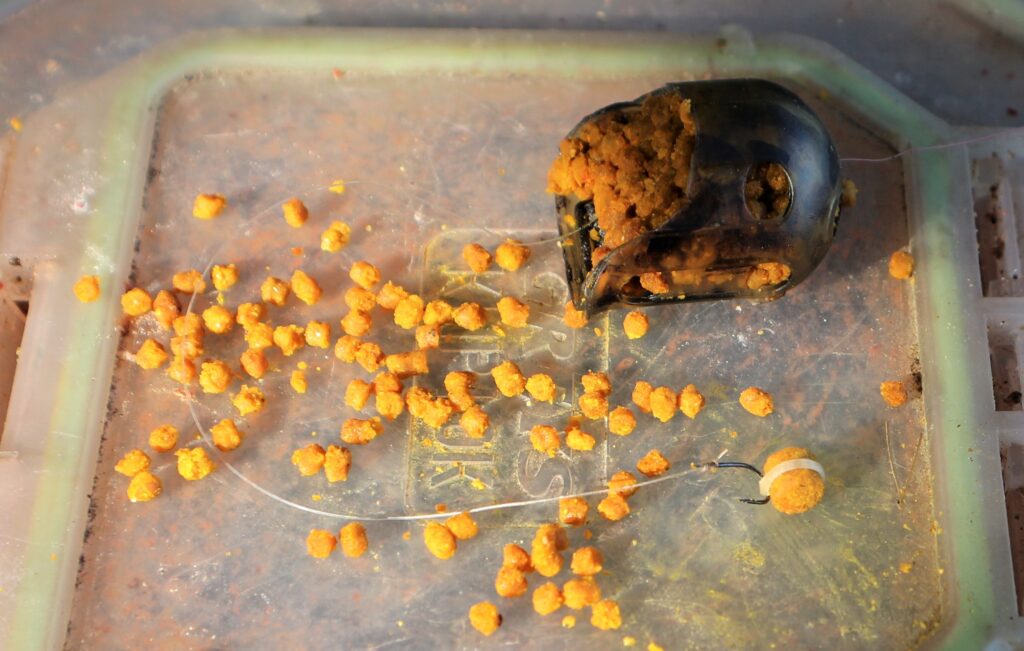
Even when just feeding pellets, sometimes small nuisance fish become too active in a swim. If this happens, I switch to a banded pellet and if I’m feeding micros, a 4mm size is ample and more likely to be picked up than anything bigger. Pre-tied shop-bought hook lengths are okay if large fish are knocking about, but can be too short and feature over-heavy hooks for targeting silvers like roach and skimmers. As previously mentioned, 6inch is better, because it puts anything you hook a bit further away from the feeder as it’s played in. Small latex bait bands installed in looped hairs are okay for presenting hard pellets, but to be honest, simply hooking a banded pellet as you see here works just as well. I don’t think fish are that fussy when they get a taste for pellets and start hoovering them up like vacuum cleaners. I play about with pellet colours and have been doing well in deeper water swims with lighter ones recently.
NEW TERRITORY
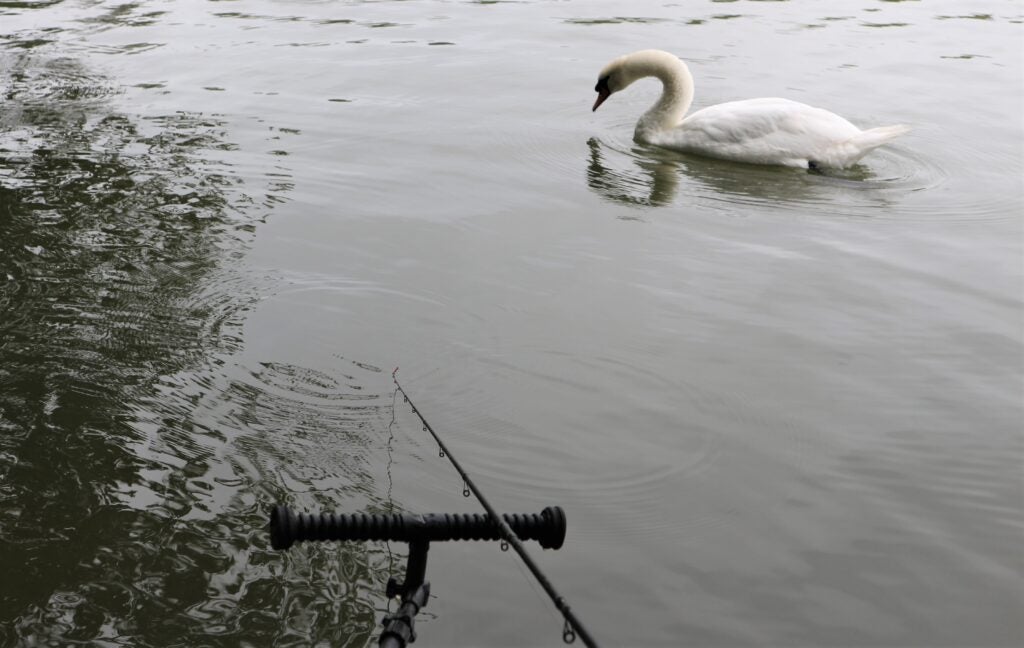
Like many people I’m sure, I found myself drawn into the chuck it as far as I could scenario when feeder fishing. But it got a bit tiring cranking in small fish or missing bites, after going to all the trouble of launching baits such a long way. It makes a nice change taking a gentler casting route, putting scaled-down feeders on a pinhead. Very often I catch more too, because I’m not wasting half my day winding in huge quantities of line. I also think by casting just beyond long pole length, a new world opens up, fishing an area that rarely gets troubled on many venues. Bigger fish that have wised up tend to inhabit such spots, knowing they are much safer. Bites tend to be more positive too, with less stretch in the main line registering indications more clearly on soft-action quivertips. It’s important to use mono instead of braid by the way, because you need a bit of give, especially when using short hook lengths, where braid is too severe.
GENTLY DOES IT

Even with a soft rod and using mono, it pays to be careful when playing in better-sized fish with mini feeder tactics at close range. I aim to lead fish in, rather than bullying them, which helps to avoid hook pulls. I first learnt to tame big bream in this manner on the River Shannon at Athlone. I remember watching swingtip maestro Sid Meads bagging up on a festival there, getting in big slabs much faster than everyone else with a forgiving rod. I tried using a softer blank and it worked wonders for me as well. A gentle lift into takes and by not putting much pressure on hooked fish, they could be guided in without pulling back. I noticed anglers hitting into their quarry hard, with stiffer-action rods, were taking much longer to tame fish in the strong current. Applying less backbone gets fish under the rod tip fast, but you have to be ready for them to kick hard near the landing net stage. Long-handled nets help a lot here.
SECRET SHOALS
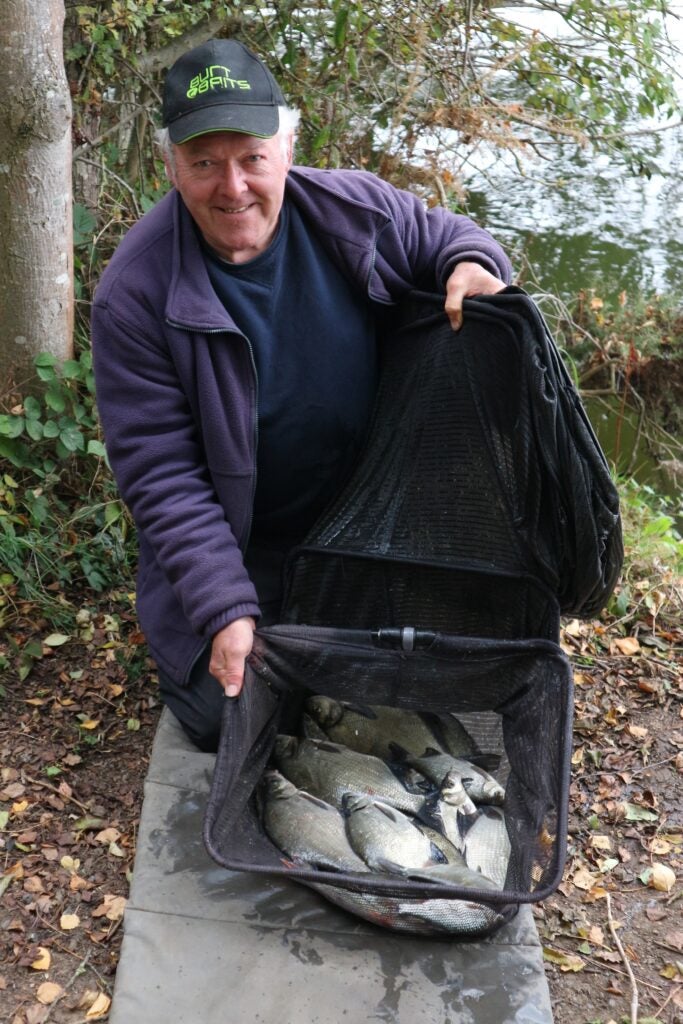
Since I’ve got more heavily into mini feeder fishing over the past few years, it’s fascinating what turns up. You hardly ever see big silvery skimmers like this on many local fisheries, fish that obviously haven’t been caught before. You might get the odd one using normal groundbait feeder tactics at range, but not lots of them like this. The same applies when using the pole, where it’s rare to put a bag of these shy biters together. I tried the same method a few days later, on my first visit to a new lake, which a mate introduced me to. He had never caught any bream from it during several visits, but using a small pellet feeder, not too far out, I caught fish like this all over again. This way of fishing doesn’t just work on stillwaters by the way. It’s worth considering on big rivers down the nearside, also on the far bank of less wide streams, drains and canals. Putting small loadings of bait in more regularly quickly stirs things up.
The post Mini Feeder Fishing first appeared on FishingMagic Magazine.
Continue reading...

Some of the best swims I’ve fished have been downright awkward casting-wise, often heavily overgrown with foliage on both sides and above. A little bit of pruning can help, but unless you have brought ladders with you, branches overhead have to be put up with. The best way of beating this problem is to use a short bomb or quivertip rod and a scaled-down feeder. Rod-wise, I’m talking about a soft-actioned blank around 10ft in length, with sensitive 3/4oz or 1oz quivertips. You can cast something like this in tight situations, underarm, or even sideways if necessary. It’s easier to be accurate with short rods, even if you have to change your casting style. Another important aspect of fishing feeder tackle at close range in tricky swims, is all the cover attracts plenty of fish. With the modern trend of casting to the horizon, I have a good chuckle when I’m bagging up close, watching numerous feeders crashing out into the beyond.
SCALING DOWN

Thanks to the current popularity of launching end tackle into orbit, which is a widespread trend in both specimen and match fishing circles, it’s getting harder to find small, lightweight feeders. I treasure the ones I have in my collection, in many cases purchased many years ago. If I can’t find what I’m looking for, I’m not afraid to rip big weights off any feeder design, to modify it so it suits what I want. Feeders carrying between 10g and 15g are perfect for fishing close range in most depths. I normally kick off with a cage design because it releases its contents quickly, helping to build swims up faster than anything else. Normal practice is to use minimal groundbait to hold in lots of freebies like hemp, casters or pellets. If I want to put in some chopped worm, a plastic-bodied groundbait feeder is better at making sure the load gets down hard on the bottom. A pellet feeder is a good back-up if fish are not responding to groundbait.
SEEING EVERYTHING

Even if I end up using an in-line feeder and a short hook length, I don’t need a stiff quivertip for anything to hang itself against at close range. A lot of small indications, commonly thought to be caused by fish attacking feeders, are not always that in my opinion. Bream and roach often create tiny movements on light-action quivertips, mouthing baits and letting go if they feel any resistance. A 3/4oz or 1oz super-sensitive carbon quivertip helps to highlight these tiny indications, which often result in good fish if connected with. A lightweight feeder and soft quivertip both help to prevent taking fish feeling resistance and rejecting hook baits. Having rigs free-running has the same effect, although with short hook lengths and in-line feeders fished close in, takes are often savage enough for fish to hook themselves. Carbon quivers are better than fibreglass ones in my opinion, blending in a lot more smoothly with high modulus blanks.
BETTER BALANCED

It would be a travesty to spoil the balance of my favourite short quivertip rods, which are pleasantly lightweight and highly responsive. There’s no place or need for big pit reels here! Even some of my standard feeder reels are too big and heavy, so I’ve brought an old Daiwa winding machine out of retirement, which I used many years back for float fishing. It works fine for short chucks, combined with less weighty feeders. Line twist isn’t such a problem with smaller diameter spools at close range either. What I’m looking for is a balanced set-up, combined with a through-action rod and super-smooth reel, which doesn’t struggle when fish need to be cranked in and kept away from nearside snags. In my experience, higher priced reels are far less likely to struggle when put under serious pressure. I don’t use a clutch, finding it loses too much control when playing big fish, plus such devices cause line twist. Backwinding is better.
MINI MARVELS

Going back to my Grand Union Canal days, I often used tiny maggot feeders on wider stretches where chub were resident. I made a special short quivertip rod, or winklepicker as we used to call them back then. I remember using it on places like Lady Capels, a top match venue at the time. My custom-built rod acted like an elastic band after hooking anything, bending right the way through. But it worked and allowed me to use fine tackle to conjure bonus bites and fish. These days there are plenty of short, sensitive quivertip rods that will do a similar job, but I now find myself relying more and more on small pellet feeders at the business end of my tackle. I enjoy using cage and small groundbait designs, but pellet models have been more effective on many types of venues. I think this is due to there being so many interesting flavoured pellets to choose from, with wider colour choices and sizes that cover all types of species.
CHANGING THINGS

Starting with a cage feeder quickly stirs swims into action, but a major problem can be pulling in never-ending shoals of small perch. After an hour of winding these little blighters in, I often wonder if they are masking the fact that bigger fish have moved in. A good way of finding out is switching to a pellet feeder, which can instantly open up a new world. Simply feeding micro pellets and burying two or three red maggots inside the feeder is a good way of defeating “wasps”, as I call them, allowing good fish like this skimmer time to get in on the action. It attacked the pellet loading as it hit bottom, signalled by a weird trembling on the quivertip, which then bent round and stayed there. Burying baits like maggots often works, but if small perch problems persist, switching to banded pellets can help. Changing hook lengths isn’t a problem either, done quickly with a connector bead, alternatively hooking a band installed on a hard pellet.
BEING ACCURATE

I remember having a conversation with a top feeder angler and was amazed when he told me he preferred an 11ft quivertip rod on his beloved tidal river. “Why so short?” I asked. “Because it’s more accurate”, he said. Everyone else was using 12ft or 13ft blanks on what could be a powerful venue, depending on the tides. The shorter aspect made perfect sense to me when I thought about it, recalling how my 9ft canal winklepicker always put a tiny feeder on the money. I’ve found that’s still the case with my current high modulus carbon bomb-style rods. My favourite is 10ft, which is just long enough to keep bigger fish from running my rigs into nearside snags as they come close to the landing net stage. One thing is for sure, it’s impossible to be super-accurate when launching heavy feeders to the horizon with much longer and beefier rods. The only way it would be possible to hit the mark every time at range would be with a bait boat!
A NEW WAY

Something that used to annoy me when using short hook lengths, was the way they often wrapped back around feeders, virtually every time if you left the hook bait dangling free. But I don’t always want to bury my baits, especially when quality fish are lining up. After much experimenting, I finally cracked this issue by switching to fluorocarbon. This material is much thicker and stiffer than low-diameter mono, but because it’s almost invisible in water the diameter factor doesn’t matter. Another aspect I like, is thicker fluorocarbon is far more robust, so it doesn’t show signs of stressing after a few bigger fish have been landed. I know short 4inch hook lengths are most popular for use with in-line feeders, but I’ve found 6inch superior for fish like skimmers and bream. That bit of extra length helps avoid bumping the hook out when playing fish like these in, particularly as they thump hard against the feeder as they near the landing net.
BUSINESS END

Even when just feeding pellets, sometimes small nuisance fish become too active in a swim. If this happens, I switch to a banded pellet and if I’m feeding micros, a 4mm size is ample and more likely to be picked up than anything bigger. Pre-tied shop-bought hook lengths are okay if large fish are knocking about, but can be too short and feature over-heavy hooks for targeting silvers like roach and skimmers. As previously mentioned, 6inch is better, because it puts anything you hook a bit further away from the feeder as it’s played in. Small latex bait bands installed in looped hairs are okay for presenting hard pellets, but to be honest, simply hooking a banded pellet as you see here works just as well. I don’t think fish are that fussy when they get a taste for pellets and start hoovering them up like vacuum cleaners. I play about with pellet colours and have been doing well in deeper water swims with lighter ones recently.
NEW TERRITORY

Like many people I’m sure, I found myself drawn into the chuck it as far as I could scenario when feeder fishing. But it got a bit tiring cranking in small fish or missing bites, after going to all the trouble of launching baits such a long way. It makes a nice change taking a gentler casting route, putting scaled-down feeders on a pinhead. Very often I catch more too, because I’m not wasting half my day winding in huge quantities of line. I also think by casting just beyond long pole length, a new world opens up, fishing an area that rarely gets troubled on many venues. Bigger fish that have wised up tend to inhabit such spots, knowing they are much safer. Bites tend to be more positive too, with less stretch in the main line registering indications more clearly on soft-action quivertips. It’s important to use mono instead of braid by the way, because you need a bit of give, especially when using short hook lengths, where braid is too severe.
GENTLY DOES IT

Even with a soft rod and using mono, it pays to be careful when playing in better-sized fish with mini feeder tactics at close range. I aim to lead fish in, rather than bullying them, which helps to avoid hook pulls. I first learnt to tame big bream in this manner on the River Shannon at Athlone. I remember watching swingtip maestro Sid Meads bagging up on a festival there, getting in big slabs much faster than everyone else with a forgiving rod. I tried using a softer blank and it worked wonders for me as well. A gentle lift into takes and by not putting much pressure on hooked fish, they could be guided in without pulling back. I noticed anglers hitting into their quarry hard, with stiffer-action rods, were taking much longer to tame fish in the strong current. Applying less backbone gets fish under the rod tip fast, but you have to be ready for them to kick hard near the landing net stage. Long-handled nets help a lot here.
SECRET SHOALS

Since I’ve got more heavily into mini feeder fishing over the past few years, it’s fascinating what turns up. You hardly ever see big silvery skimmers like this on many local fisheries, fish that obviously haven’t been caught before. You might get the odd one using normal groundbait feeder tactics at range, but not lots of them like this. The same applies when using the pole, where it’s rare to put a bag of these shy biters together. I tried the same method a few days later, on my first visit to a new lake, which a mate introduced me to. He had never caught any bream from it during several visits, but using a small pellet feeder, not too far out, I caught fish like this all over again. This way of fishing doesn’t just work on stillwaters by the way. It’s worth considering on big rivers down the nearside, also on the far bank of less wide streams, drains and canals. Putting small loadings of bait in more regularly quickly stirs things up.
The post Mini Feeder Fishing first appeared on FishingMagic Magazine.
Continue reading...
